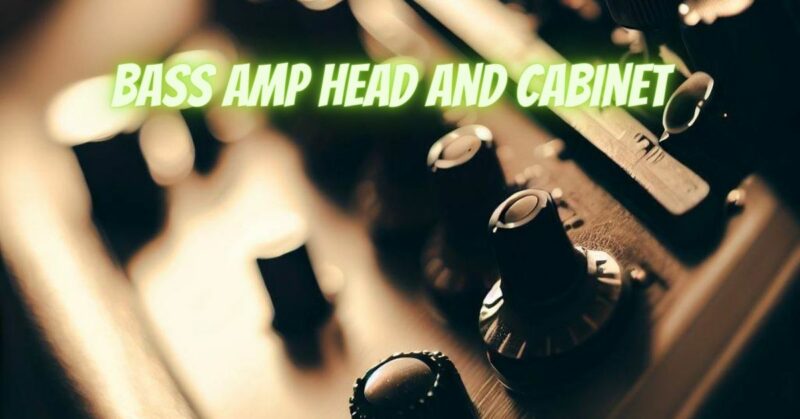A bass amp head and cabinet combination is a popular setup used by bassists to produce powerful and immersive low-end sound. This configuration consists of two main components: the bass amp head, which houses the amplifier and controls, and the speaker cabinet, which houses the speakers. In this article, we will explore the features and benefits of a bass amp head and cabinet, and how this setup contributes to creating the distinctive and impactful bass tones loved by bass players and audiences alike.
The Bass Amp Head:
The bass amp head is the control center of the setup. It houses the amplifier circuitry, preamp, power amp, and tone-shaping controls. Bass amp heads come in various wattage ratings, offering different levels of power and headroom for different performance scenarios.
Features of a Bass Amp Head:
- Wattage and Power: Bass amp heads come in a range of wattages, from compact practice amps to high-powered stage rigs. Higher wattages provide more headroom and volume, making them suitable for larger venues and gigs.
- Preamp and EQ Controls: Bass amp heads typically feature a preamp section with EQ controls, including bass, midrange, and treble adjustments. These controls allow bassists to shape their tone to suit various musical styles and preferences.
- Effects Loop: Many bass amp heads include an effects loop, which allows bassists to integrate external effects processors and pedals into their signal chain.
- DI Output: Bass amp heads often feature a direct output (DI), enabling direct connection to a mixing console or recording interface, ideal for studio recording and live sound reinforcement.
The Bass Speaker Cabinet:
The bass speaker cabinet houses the speakers that produce the sound generated by the bass amp head. The cabinet’s design and speaker configuration significantly impact the tone and projection of the bass sound.
Features of a Bass Speaker Cabinet:
- Speaker Size and Configuration: Bass cabinets come with various speaker sizes, typically ranging from 10 to 15 inches, and some even include multiple speakers in different configurations, such as 1×12, 2×10, 4×10, or 1×15. Each configuration offers unique tonal characteristics and projection capabilities.
- Cabinet Design: Bass cabinets can be open-back or closed-back designs, each contributing to the overall sound and bass response. Closed-back cabinets provide more focused low-end, while open-back cabinets have a more open and airy sound.
- Power Handling: Bass cabinets have a power handling rating that indicates the maximum wattage they can handle. Matching the power handling of the cabinet with the amp head ensures optimal performance and prevents damage to the speakers.
Benefits of a Bass Amp Head and Cabinet:
- Versatility: Using a separate bass amp head and cabinet allows bassists to mix and match different configurations to achieve the desired tone and volume level for various playing situations.
- Power and Projection: The combination of a high-powered amp head and well-designed cabinet ensures powerful and immersive bass tones, capable of filling any venue.
- Customization: Bassists can tailor their setup to their specific needs and preferences by choosing an amp head and cabinet combination that suits their playing style and musical genre.
A bass amp head and cabinet setup is a powerful and versatile configuration that enables bassists to create the distinctive and impactful low-end sound that defines their instrument. The bass amp head provides control over the tone and power output, while the speaker cabinet projects the sound with clarity and depth. Whether for studio recording, rehearsals, or live performances, the combination of a bass amp head and cabinet is the key to unlocking the full potential of the bass guitar and delivering a memorable bass experience to audiences worldwide.

